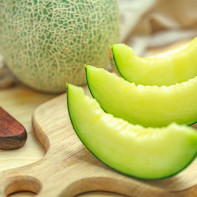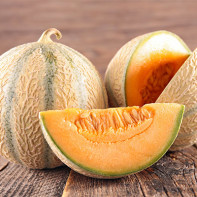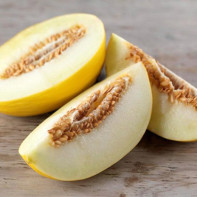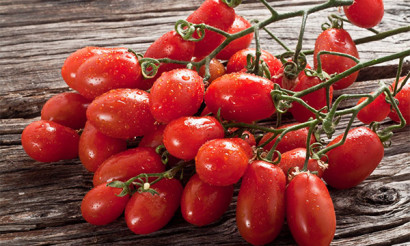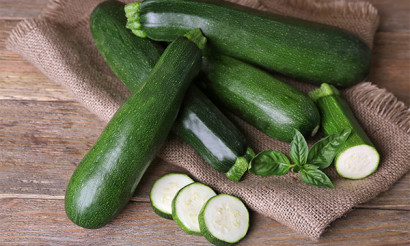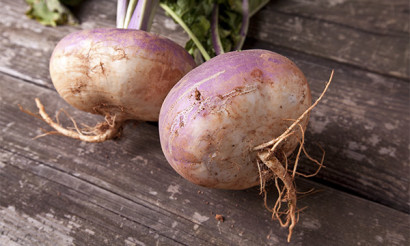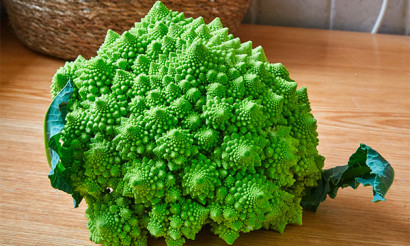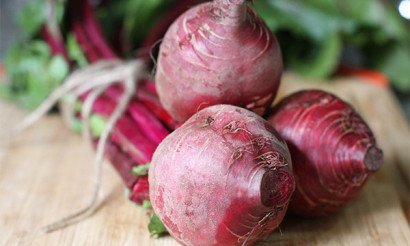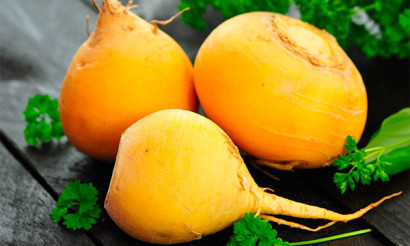Melon: composition, useful properties and contraindications
Melon is a sweet fruit with tender flesh inside. Its color can be white, orange, yellowish. It comes in round or oval shape. The ripe fruit smells like pear, honey or pineapple. The plant belongs to the gourd family and is a melon crop.
- Composition and calories
- Useful properties of melon
- General benefits
- For Women
- For Men
- In Pregnancy
- Breastfeeding
- For children
- For weight loss
- What are the benefits of melon seeds
- The benefits and harms of dried melon
- Melon Juice Benefits
- Melon in Medicine
- For Diabetes
- For pancreatitis
- For gastritis
- In constipation
- For gout
- For the Liver
- Melon in cosmetology
- For Face
- For Hair
- Harm and Contraindications
- Melon Poisoning Symptoms
- How to choose and keep a melon
- Can I freeze it?
- How to eat melon correctly
- How much can I eat per day?
- Can I Eat a Melon at Night?
- What can be made of melon: Recipes
- Candied
- Compote
- Jam
- Cocktail
- Smoothie
- Wine
- Juice
- Soup
- Salad
- Can I Give Melon to Dogs
- Popular varieties
- Torpedo
- Kolkhoznitsa
- Altai
- Caramel
- Ethiopka
- Lada
- Interesting facts about melon
Composition and calories
Melon is filled with various useful substances. These are vitamins of group B1, B2, A, C. Macronutrients present in the composition are sodium, magnesium, potassium, of the trace elements there is iodine, cobalt, iron. The melon has 35 calories per 100 g of product, so it is considered low-calorie. It has 7.4 g of carbohydrates, 0.6 g of protein and 0.3 g of fat.
Useful features of melon
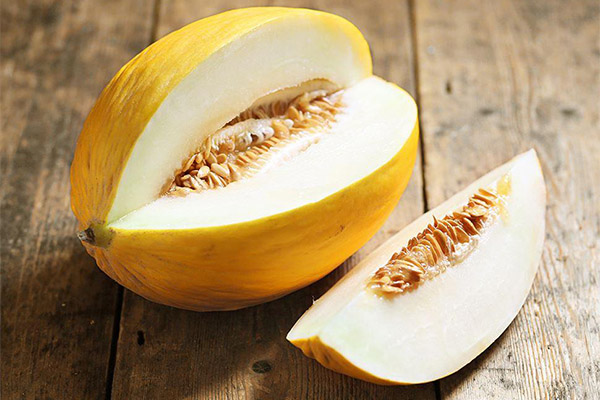
General benefits
- The composition is very rich in useful minerals, vitamins, fiber. The high content of iron is used to raise hemoglobin. A large amount of potassium is used in the treatment of cardiovascular diseases, in various kidney and liver pathologies.
- The silicon included has a beneficial effect on the muscle walls, skin and hair. It is also good for the nervous system: the mood improves, it reduces irritability and insomnia, reduces fatigue. The element is able to restore the walls of the intestines, the walls of the stomach and have a beneficial effect on the other internal organs.
- Vitamin C is present in large quantities in the fruit. It plays an important role in the treatment and prevention of viral diseases.
- Fiber helps to restore intestinal flora, remove cholesterol from the body.
- Often the melon crop is used to treat constipation.
- Beta-carotene, which is part of the composition, has a positive effect on the hair and nails.
- Retinol is responsible for restoring the cornea of the eyes and improving vision.
For women
The folic acid contained in the fruit is able to restore the hormonal background, prevent the risk of gynecological diseases. Collagen is able to make the skin elastic and soft. The fruit can be consumed as food or make cosmetic procedures with it. Melon masks make the skin soft, eliminate dryness and irritation. Vitamin A helps the skin to become velvety. It is also aimed at the prevention of uterine, breast, and ovarian cancer.
For men
The included zinc improves the quality and activity of sperm. The pulp is an excellent aphrodisiac. Iron can help improve heart function. The product does not clot the blood, which eliminates the appearance of blood clots. This reduces the risk of various cardiovascular diseases. It is believed that men have a higher incidence of strokes and heart attacks than women. Vitamin C helps the immune system, and nicotinic acid thinens the blood.
Pregnancy.
The minerals and vitamins included have a positive effect on the development of the fetus. Consumption of melon culture during pregnancy will reduce swelling and cleanse the body of toxins. The presence of folic acid is a must-have vitamin during pregnancy. During the first terms, it is the basis in the formation of the future child.
Melon is an allergen, so it is mandatory to consult with your doctor before consuming it.
Complications will not arise at the use of not more than 200 grams of pulp per day.
When breastfeeding
During lactation, it is not recommended to use melon, since it is a natural laxative. The baby may have diarrhea, strong gassiness. It is recommended to eat this berry after 8 months of age. For the first time will be enough 50 grams of fruit. During the day it is necessary to monitor the reaction of the body in the child.
For children
A child's first introduction to melon should take place no earlier than 1 year of life. Start complementary feeding with small pieces and during the first day observe the reaction of the body. A child should be given only ripe fruit, without green spots. It is best to give melon instead of snacks. It is recommended to feed your child just cut up the fruit, since the product that was left in the air for more than 2 hours can provoke diarrhea. For children, melon is useful because it strengthens the immune system, improves vision, promotes active growth and development of the body.
For weight loss
Nutritionists recommend eating the pulp for those who want to lose excess weight. Thanks to the fiber included in the composition, all the toxins are removed from the body. It is recommended to eat the product in portions of no more than 300 grams per day, in the morning and during the day. You should not eat it before going to bed, as it is a heavy product for digestion. If you need to get rid of excess weight, you should give preference to fresh pulp and avoid the seeds and dried melon.
To achieve the maximum effect, it is recommended to do days of discharge and once a week to eat only the pulp, dividing the fruit into 6 meals. As a liquid is allowed water without gas, at least 2 liters per day. The result of unloading will be minus 1 kg in 24 hours.
What are the benefits of melon seeds?
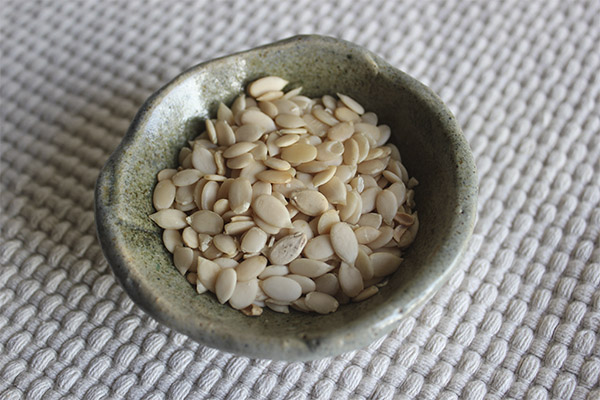
- The seeds are an excellent aphrodisiac. Crushed seeds can be consumed every day with one teaspoon. Such a powder is able to enhance male potency.
- The seeds can be used for kidney problems.
- Their powder is able to lower blood sugar.
- Melon seeds are used in cosmetology. Decoction of the seeds should be rubbed on the skin. It will become supple and velvety.
- Included in the composition of pectin is able to improve the state of health, remove metals from the body. Melon seeds are a natural laxative and diuretic. Thanks to folic acid, which is part of the composition, it improves brain function. Melon seeds can help with diseases of the gastrointestinal tract, diabetes, infectious respiratory diseases.
- These seeds help with pain during menstruation.
In 100 g of seeds contains 555 calories.
The benefits and harms of dried melon
The dried melon does not differ much in composition from the fresh one. It contains potassium and magnesium and iron. Vitamins A and B are preserved, but the caloric content increases. It is 90 calories per 100 grams of product.
- Dried melon has beneficial effects on the skin and bones.
- Regular consumption improves the cardiovascular system.
- The product has a favorable effect on the nervous system, improves mood, reduces stress levels in the body.
- Preserved folic acid, which is useful for pregnant women.
- Included enzymes improve sleep and help cope with loss of strength. Fibers can gently cleanse the intestines of toxins.
- Vitamin C is aimed at improving the immune system and helps improve brain function.
- The chlorine and sodium contained in the product are able to regulate the water balance of the body.
Overconsumption of the product entails a number of consequences. Dried melon should be avoided during the lactation period. The immature body of a newborn baby is not able to digest such a heavy composition. It is undesirable to eat the product for people suffering from diabetes - it contains a lot of sugar, as well as for people with diseases of the gastrointestinal tract.
Even dried melon is an allergen. People with the possibility of allergic reactions should consume it with particular caution. Because of its high calorie content, it is not suitable for people who are overweight.
The benefits of melon juice
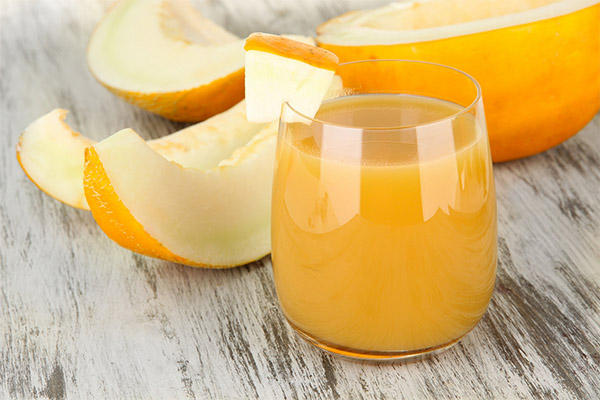
- Melon juice is able to gently cleanse the body of harmful toxins, slags.
- The product stimulates the work of the kidneys, increases the diuretic effect, as a result of which edema and stagnant fluids in the body pass.
- The drink has a positive effect on the nervous system, improves mood and reduces stress.
- Melon juice is used in cosmetology. With the help of rubbing it is possible not only to make the skin clean and soft, but also to get rid of redness.
- The juice contains a lot of calcium, which will help to restore bones and nails.
- Melon juice is able to regulate the water balance in the body and thus perfectly quenches thirst.
- The drink increases and strengthens the immune system.
- Melon juice can inhibit the development of such ailments as hearing and memory impairment.
- The product has a natural relaxing effect, suitable for people with high physical activity.
Melon in medicine
- In medicine it is used as a laxative and diuretic.
- It is useful for vitamin deficiency because of the high content of useful substances.
- Promotes better resorption of tumors.
- Appointed in anemia and vascular problems.
- Used for the prevention of varicose veins.
- Able to eliminate toxins and cholesterol.
- Improves metabolism in the body.
With diabetes.
It is advisable to eat a special diet for this disease. Melon contains fructose, so in large quantities can provoke complications in the patient. The glycemic load of melon is 6.5 g. For type 1 diabetes, it is necessary to take into account the carbohydrates consumed and physical activity. For type 2 diabetes, consumption of the product up to 200 g per day separately, after a heavy lunch is allowed.
Important: The glycemic index of melon is 65 units.
In pancreatitis
During the exacerbation of the disease, the consumption of the product should be abandoned. The high content of carbohydrates puts a strain on the cells. Fructose and fiber will aggravate intestinal function, resulting in gas, altered stools and bloating. In remission stage, it is possible to eat fruit, but the daily rate should be limited to 200 grams. For better functioning of the body during the disease it is recommended to make melon juices and jams. Heat treatment of the product will have a gentle effect on the weakened body.
Gastritis
In the acute stage, it is strictly forbidden to consume melon. When the berry enters the stomach, a large amount of acid will be released for processing, which will contribute to increasing the pain effect. Undigested melon, entering the intestines, can provoke increased flatulence and constipation.
During the remission stage, it is allowed to consume melon. Portions should be small, about 300 grams per day. It is best consumed as a separate product and as a snack.
For constipation
Melon contributes to the good functioning of the digestive system. With normal functioning of the stomach, the melon quickly reaches the intestines. All the useful properties of the product are absorbed into its walls, and the fiber helps to eliminate toxins and previous food. Constipation passes quickly, bloating of the stomach is not observed.
With gout
It is recommended to consume melon in case of gout. Thanks to its diuretic effect, it can remove uric acid, toxic substances. Melon can suppress inflammatory processes. Regular consumption of the product leads to improved treatment dynamics of the disease. It is recommended to consume raw pulp, dried product, as well as grains for the prevention of the disease.
For the liver
During the remission period of liver disease, it is allowed to consume melon in small quantities. The berry promotes cleansing from toxins. With cirrhosis of the liver, the consumption of a small amount of the product is allowed. With hepatosis, it is recommended to include melon in the diet.
Melon in cosmetology
This berry contains a huge number of useful substances. With the help of melon you can get rid of acne, acne, redness of the skin. The product helps to eliminate small wrinkles, makes the skin soft and supple, nourishes skin and hair. Melon is able to preserve hair color and protect from harmful factors.
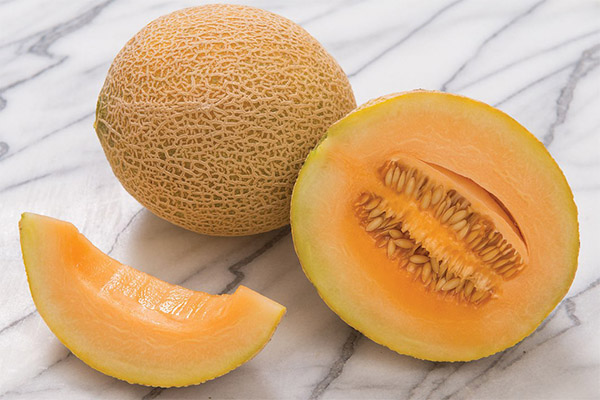
For Face
- Melon juice is able to moisturize and nourish dry skin with vitamins. You will need the juice of 100 grams of pulp. It is better to rub the face at least 2 times a day.
- For oily skin and to eliminate shine is a good mask. Mix 100 grams of pulp with a tablespoon of honey and sour cream. The mask should be applied to the face for 30 minutes. Rinse with warm water.
- To give luster and even tone, a good mask of the pulp of the fruit. Mix 100 grams of fruit pulp with a tablespoon of honey and sour cream and one egg yolk. Apply the mask to the skin for 20 minutes, rinse with cool water.
- Use the pulp to get rid of redness and age spots on the skin. Mix a tablespoon of melon juice and lemon juice. You can wipe your face with this tonic, then rinse thoroughly with water.
- For prevention of wrinkles mix melon pulp, egg yolk, sour cream and honey in equal proportions. Leave the mask for 30 minutes.
For hair
- Mask of melon can also strengthen the hair. To do this, mix the pulp - 20 grams with 1 tablespoon of burdock oil, add one egg yolk. Massaging movements, rub into the hair roots, then leave it in a warm place for 30 minutes. Shampoo thoroughly.
- You can cope with dry and brittle hair. To do this, mix the pulp with 20 grams of burdock and coconut oil. Apply evenly to the entire length of the hair for 20 minutes. Rinse with shampoo.
- For softness and shine you need to mix 50 g of cognac, 100 g of custard coffee, add 100 g of melon pulp. Apply the mixture to the entire length of the hair for 15 minutes.
- To create volume, mix the pulp with lemon juice and jojoba oil. Rub the mask into the roots of the hair, then soak the composition for at least 40 minutes.
Harm and contraindications
- Because of the complex enzymes included in the composition, a large consumption of the product can cause intestinal upset, bloating and the development of flatulence.
- The melon crop contains a lot of sugars and fructose. People with diabetes should use this product with caution.
- Unripe fruits can provoke diarrhea, so they are not suitable for patients with gastritis and ulcers.
- Melon is an allergen. Therefore, people prone to allergies should be careful with it.
- In limited quantities, the product should be consumed by pregnant and lactating women. The excess can cause heartburn and stomach pain.
Symptoms of melon poisoning
The fruit contains a large amount of fiber, so it is not recommended to wash it down with water and eat it with fermented dairy products. It should not be mixed with alcohol. The fruit can cause chemical poisoning, since melons are treated with various chemicals that accumulate in the peel and penetrate into the pulp.
Nitrates treated with the fruit, once in the human body, can inhibit the movement of oxygen. Hypoxia can occur. Chemical poisoning will manifest itself no sooner than 6 hours after ingestion of the product. The symptomatology is severe. Chemical intoxication can provoke nausea, pain and severe dizziness. Sharp abdominal rubs, vomiting, diarrhea, and liver pain appear.
Improper storage and transportation can promote fungi and germs in the rind. The sweet pulp is an excellent breeding ground for bacteria. Such poisoning is characterized by stomach aches and pains, nausea and vomiting, increased body temperature.
In melon poisoning you should drink at least 1 liter of clean boiled water, take absorption medication, rest and bed rest. If the symptoms of poisoning do not go away after 24 hours, you should consult a doctor.
How to choose and store melon

- A ripe melon has a sweetish flavor. The odorless fruit should not be taken.
- You can use the sound to determine the maturity of the fruit. A ripe melon will make a soft thud with the palm of your hand.
- The ripeness can be checked with the peel. If you gently press on it, it will immediately recover. The melon is ripe. If the rind is pressed through, then the fruit is overripe and should not be eaten.
- The color of the fruit will also tell you its ripeness. It should be even and without black spots.
- The tail should be dry.
- Melons should not be purchased in stalls located near roadways. Dust from cars can penetrate the skin of the fruit and bacteria can develop there.
- You should not buy a cut berry. It can contain bacteria.
- When buying a melon, make sure it has been stored in a cool, dark place.
- The seeds should separate easily from the pulp.
If the seeds are empty and dry, it is better to throw the fruit away. This indicates that it has been fertilized with the strongest chemicals. Consumption in food can provoke poisoning.
The whole fruit can be preserved for a long time if certain storage conditions are followed. The temperature should be kept from 0 to 3 degrees. But you should remember that long storage at 0 degrees will freeze the fruit, and it will lose a number of useful and nutritious substances for the body.
The cut fruit should be stored only in the refrigerator. Keep it there for a long time is not recommended, because over time, the pulp begins to produce harmful gas, which can provoke poisoning.
Can I freeze it?
Melon flesh can be preserved by freezing ripe slices. But it will lose a number of useful substances. It is better to dry and cure it.
How to eat melon correctly
Before serving, the fruit should be thoroughly washed. It is best to leave it in a bowl of water for 3 hours. This helps to remove nitrates from the rind. The melon is served pitted and cut into small pieces.
Serving melon to the table, you should consider the menu. Do not mix the berry with dairy products and alcohol, wash it down with water or carbonated beverages. After the main meal should be half an hour. It is worth recalling that melon is a heavy product for digestion, so you should not burden the stomach.
Serving melon on a common dish at the holiday table, it is necessary to cut it into slices no more than 3 centimeters wide. The melon is taken with the hands, which are then wiped with a napkin. Eat the fruit with a knife and fork.
How much you can eat per day
The melon should be eaten in moderation. Since the product is considered low-calorie, no harm to the figure will follow. But when consuming a large amount of pulp, which contains sugar and fructose, fat deposits can accumulate. This will happen if there is no stable physical activity.
There are no clear recommendations regarding the daily norm. You should always be guided by the state of your body.
Can I eat at night?
The fruit should be consumed not earlier than 2 hours after a meal. It is not recommended to overeat before going to bed. Two small pieces are enough. Melon is a natural diuretic. When overeating, frequent urges may occur, and swelling may appear in the morning. Excess melon can also lead to fermentation processes in the stomach and intestines. In the morning, flatulence or diarrhea may occur. The process of digestion of melon is complex, taking up to two hours. Therefore, if in the evening you want a sweet fruit, it is better to consume it at least three hours before bedtime.
What can be made of melon: recipes
The menu from melon is very diverse - from light jams to complex drinks. From melon you can make an uncomplicated jam. To do this, you need to boil the pulp with sugar. In the summer heat you can make a refreshing compote. Need water, pulp, lemon juice. Serve the drink to the table slightly chilled.
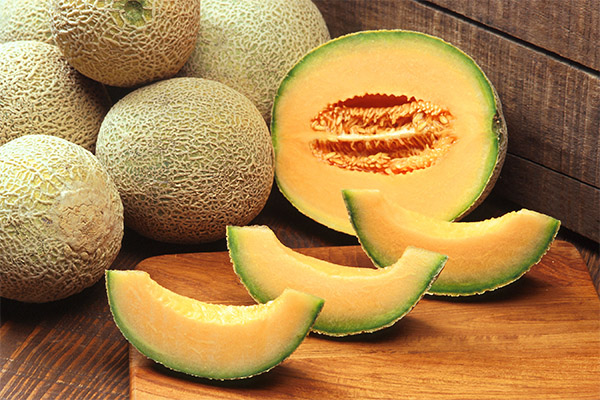
A variety of pies and muffins are made with melon. On the basis of the sweet fruit make salads. They can be fruit or vegetable. Also make light frozen desserts or ice cream. For those with a sweet tooth, a recipe for melon marmalade will do. Thanks to the fructose, the dessert will be very sweet and have a spicy flavor.
For those who are watching their figure, the best find would be a smoothie. Since the fruit is low in calories, smoothies can be consumed as a complete snack. As an unusual appetizer for the holiday table serve melon, fried in batter.
Candied
For cooking, the ripe fruit is suitable. It should be cut into small slices, separated from the skin. For this, you need half a kilogram of pulp. In a separate saucepan, prepare sugar syrup. After boiling, add the melon slices and cook for 7 minutes on low heat, stirring thoroughly. Place the slices in a preheated oven to 100 degrees. To prevent them from sticking, it is better to use paper, laying the slices at a distance from each other. Then leave in the oven until dry.
Store the finished product in a glass container, with a tightly closed lid. Storage in a cool place will last up to 6 months.
There are 355 calories per 100 grams. It can be used as an independent product, garnish cakes and add it to cakes.
Melon candied fruit retains folic and ascorbic acids. The use of such sweets can improve the immune system.
Compote .
For the compote you will need a kilogram of pulp, 1.5 liters of water, three lemon rings and 200 grams of sugar. Cut the pulp into small cubes, mix with water, sugar and lemons. Cook on low heat. Serve cooled. Kompot contains a huge amount of useful substances. It is best suited for kidney disease, liver, pancreatitis, as it will be an excellent diuretic, eliminating toxins and bile. There are 97 calories per 100 ml of the product.
Jam
Melon jam has a huge number of beneficial properties. It helps to restore hair and nails, normalizes blood and blood pressure, in spring it will be an excellent remedy against avitaminosis.
To make jam, use pulp and sugar. Put the slices in a saucepan and cover with sugar. Leave on low heat. It is worth remembering that after heat treatment a number of useful substances will be lost.
Cocktail
Mix 200 grams of fruit pulp, 150 grams of lemon juice, a spoonful of honey in a blender. Serve chilled and garnish with mint leaves. Drink from melon will remove thirst, replenish body's water balance, increase immunity, save figure, have a positive effect on hair and nails.
There are 211 calories per 100 ml of cocktail.
Smoothies
Smoothies are healthy smoothies. They are suitable for people who are anxious about their figure. For a smoothie, you will need 300 grams of pulp and 250 grams of drinking yogurt. All you need to mix until a homogeneous mixture.
100 g of the product contains 58 calories. Such a drink can not only quench thirst, but also hunger.
Wine
Due to fructose and ascorbic acid, melon is used as a raw material for homemade wine. For wine you will need about 9 kg of melon pulp, 2 kg of granulated sugar, 1 l of water, citric acid, 200 g of raisins.
Cut the pulp into small pieces. Pour the extracted juice into a fermentation tank. Fill it up to 70%. Add raisins and citric acid. Store the wine in a dark, warm room at a temperature of 23 degrees. After a few days add the sugar. After 3 weeks the wine will be ready. A white sediment will form on the bottom. Pour the wine into a clean container without sediment. You can add sugar to taste and vodka for strength. The wine should be transferred to a cool, dark room at a temperature no higher than 18 degrees. Every 10 days it should be poured into a clean container. Repeat the procedure until no more sediment forms on the bottom. The strength of the drink will not exceed 12%. The color will depend on the variety of melon. In a tightly closed glass container can be stored for up to 1.5 years.
Juice
Only ripe fruits are used for fresh juice. It is best to use mechanical or automatic juicers to preserve as many useful vitamins and elements as possible. The finished juice has a honey flavor, a bright aroma. When the juice cools, a slight sourness may appear. It is useful for kidney disease, is able to remove urea and heavy salts, is a natural and safe diuretic that does not wash out useful substances from the body. Thanks to the vitamins, the drink is able to strengthen the immune system. Potassium, which is part of the composition, improves heart function and blood properties.
There are 47 calories per 100 ml of juice.
Soup
To make the soup you will need: 4 shallots, olive and butter, meat broth, 1 ripe melon, salt and pepper to taste. Onions should be fried in olive oil with the addition of butter. Fry until golden brown over medium heat. Mix onion with melon pulp and meat broth. Blend in a blender until smooth. Serve chilled. The soup can be garnished with a mint leaf.
100g of soup contain 165 calories.
Salad
For this salad you need 400g of pulp, 30g of red onion, a teaspoon of lime juice, salt and pepper to taste, 100g of feta cheese. Cut the pulp into small cubes. Finely chopped red onion, mix with pulp, shredded cheese, dress with olive oil and lime juice. Add spices to taste.
In 100 grams ready salad contains 335 calories.
Can I give my dog a melon?
The fruit contains sugar, a large amount of which is harmful to the dog's body. Treat your dog to this treat only after the main meal, so that the fruit is better digested. It should be given without the seeds and peels, as they can be a serious problem for the digestion. The fruit must be fresh; spoiled fruit can cause intoxication of the dog's body.
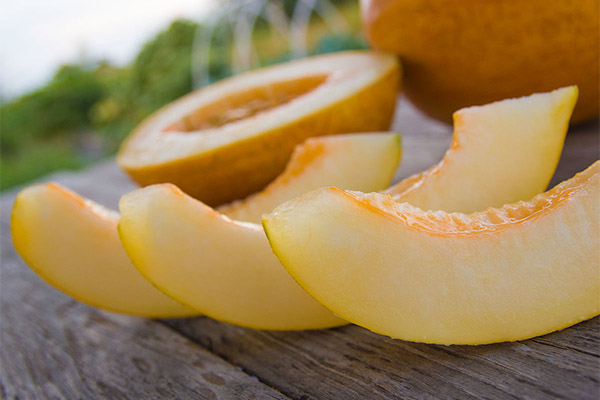
If a dog refuses melon, it is not always a spoiled fruit. The reasons may be different: poor health, personal preferences of the dog.
Overeating causes a number of problems. Urination may increase, diarrhea may appear. Complications from overeating in a dog are more severe than in humans. Therefore, the pet's diet should be monitored. Vitamins may be absorbed differently in humans and dogs. Therefore, you should not give the pet this berry often. Two times a week will be enough.
Popular varieties
Torpedo .
It is considered the most popular variety. It is grown in Uzbekistan. In Russia, this variety began to grow since the end of the 19th century. The name "torpedo" is popular. In each region this variety has its own name. It is a heat-loving species. Grown in appropriate conditions, the fruit can have a weight of 15 kg. The mature fruit has a yellow color, with white sprouts. The peel is hard and easily tolerates long transportation. The sweet fruit has a high caloric value, however, it is an excellent choice for free days and dietary meals.
The variety is considered late-ripening, so it is better to buy such melon not before the end of August. When choosing a fruit, you need to carefully inspect the skin. Do not take with a wrinkled, as there may be germs. Green streaks symbolize that the fruit has been treated with a lot of chemicals. The flesh of a ripe torpedo is white. Green streaks indicate immaturity and yellow streaks indicate chemicals. Bitter flesh is the result of beginning to rot. A ripe fruit has an aroma similar to pears and honey. Lack of odor indicates treatment with large amounts of harmful pesticides.
Kolkhoznitsa .
The fruit has a spherical shape. The flesh is white and crispy. The weight of a mature fruit is up to 1.5 kg. It is not suitable for long-term storage. This variety easily tolerates the cold, so it is possible to grow it in the open ground. The ripe fruit has a similar smell to pear and honey. If it is odorless, it means the product has been subjected to a strong chemical treatment. It is recommended to buy melon not earlier than mid-August. Fruits that are sold earlier are chemically treated to speed up growth. The unripe fruit is dangerous to eat, as it can cause serious poisoning. The hard spout indicates that the fruit is unripe and the soft spout indicates overripe.
Altai
The fruit has an oval shape and weighs up to 1.8 kg. The ripe fruit has a bright orange color, smooth skin without veins. The flesh is light orange. The melon is difficult to transport because of its soft rind. It should have no dents or veins. The firm rind indicates the fruit is mature. The color should be uniform, with no spots visible on the surface. It is believed that the tastiest fruit is medium in size.
Caramel
The fruit has an oval shape, orange in color with a pronounced mesh. It weighs up to 2 kg. This variety easily tolerates humidity. The hard rind allows transportation over long distances. The flesh of the ripe melon has a taste of caramel. A ripe berry has a dry tail and the spout should be firm. The rind of a ripe melon can be easily scratched. An overly sugary smell indicates an overripe fruit.
Ethiopka
This variety was artificially bred by Russian breeders. It is characterized by large fruits and easily tolerates heat. The rough rind has a dark yellow color, with bright white stripes. The maximum weight reaches 4 kg. The best time to buy a ripe melon is in August. The ripe fruit smells like pineapple. If there is an oily residue on your hands when you touch the rind, you should not take the fruit because it has been treated with wax during transportation. You should not take too clean a fruit - most likely, it has been washed before sale, which means that the natural bacterial background has been destroyed. And no seller will tell how long such a melon lies on the counter.
Lada
The fruit is bright yellow and has a rounded shape. The ripe fruit reaches up to 2 kg, does not have a pronounced flavor. The flesh is tender, crispy. This variety likes heat, does not tolerate dryness and heavy watering. The skin is very dense, easy to transport. This variety bears good fruit, is not susceptible to diseases. It is recommended to pick the ripe fruit at the end of August. When patting the rind, there should be a muffled sound. The immature fruit has a green color.
Interesting facts about the melon
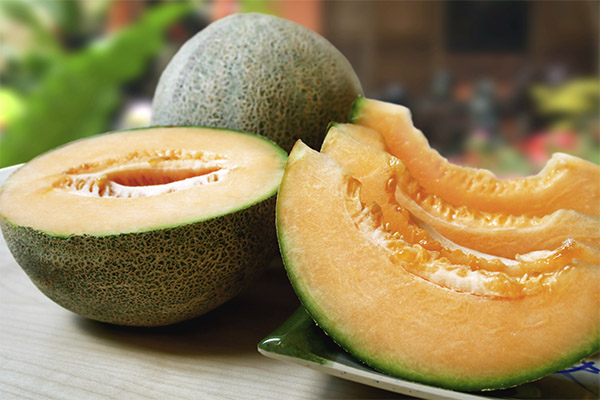
- The melon is native to Central Asia.
- The plant does not tolerate strong humidity, but it is resistant to dryness.
- The melon can yield up to 8 fruits weighing up to 10 kg each at a time.
- Melon is a plant of the Pumpkin family, a melon crop, a genus of Cucumber.
- The melon is also called the "false berry.
- It is an annual plant.
- Currently, there is no wild melon.
- The second Sunday of August is Melon Day in Turkmenistan.
- In one region of Japan, the most expensive melon in the world is grown. The cost reaches $10,000 per fruit.
- China leads in the production of this crop - about 9 million tons of fruit a year.
- There is an old Eastern saying that the melon makes hair shine, eyes sparkle, men are desirable and women are beautiful.
- 90% of the melon is water. Therefore, with its help, you can easily drown your thirst.
- In 2009, a melon weighing 200 kg was recorded.
«Important: All information on this site is provided for informational purposes only for information purposes only. Before applying any recommendations, please consult a specialist specialist. Neither the editors nor the authors are liable for any possible harm caused by materials."

